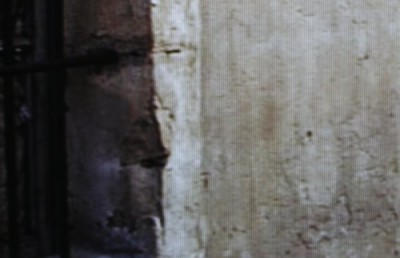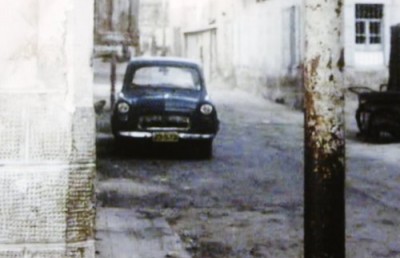Brazilian Marginal Cinema
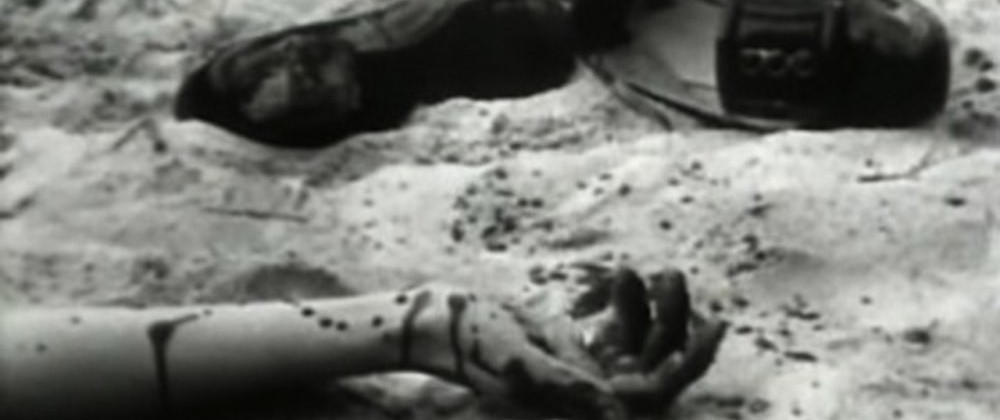
I continue to make an underdeveloped cinema, both by condition and vocation, a barbarous indigenous cinema, anticulturalist, striving for that toward which the Brazilian people have been aspiring since the days of the chanchada – to make Brazilian cinema the worst in the world. Ah, how marvellous and reasonable it would be!
Rogério Sganzerla
The annals of film history are littered with undiscovered gems, forgotten oddities and buried treasures. One such oddity, whose simple existence seems to be a miracle, is Brazilian Marginal Cinema, a radical film movement originating from Sao Paulo’s many slums, particularly Boca De Lixo (literally “Mouth of Garbage”) (Shaw, 88). The movement, which was also mockingly called “Udigrudi,” a corruption of the English word “Underground,” burst on the scene in 1967 like a Molotov cocktail and was burnt out by the early 70s after creating around 30 films (Stam, 313). What is left is the product of “young, breakaway directors who made ultra-low budget, deliberately ‘bad,’ nihilistic, virtually ‘anti-cinema’ Udigrudi (underground) films” (Rist). A very singular socio-political context, along with the movement’s concern with resistance and marginality, influenced the creation of a true third cinema “aesthetics of garbage.” Representative examples of the school include The Red Light Bandit (Rogério Sganzerla, 1968), The Angel Was Born (Julio Bressane, 1969) and Killed The Family and Went to The Movies (Julio Bressane, 1969).
Brazilian Marginal Cinema is an extremely difficult cultural object to clearly define. Its films, apart from a shared violent nihilism, rejection of good taste and focus on marginal characters, are quite different from each other, and the movement stands as a stylistically pluralist venture. They are united in their relationship to the “aesthetics of garbage” and in their position as its founding texts. But that aesthetic is radical and forever changing.

The Red Light Bandit
Each film stands as its own island in defiance of conventional notions of taste, narrative and pretty much everything else. The Red Light Bandit is based on a true story and follows a violent criminal and the media circus he attracts in an ironic, caricatural and self-mocking tone. It’s general attitude is a good example of the movement’s general stance. As Xavier describes it:
Sganzerla’s treatment is characterized by the ironic avoidance of illusionist dramatic representation and passionate social denunciation, his films exhibit a deliberate lack of concern with consistent plot, psychological coherence, or social determination, opting instead for the ludic arbitrariness of collage. Its depiction is humorously irreverent, consciously “cool” with respect to the human misery implied in the depicted world. (95- 96)
Those attitudes might seem amoral (and they are), but the movement places itself above those concerns. It takes nothing seriously, mocking everything, including itself, and refuses to even provide answers to the questions it raises. The Red Light Bandit, for example, “is talkative, it has an opinion about everything, yet in the end it refuses to give advice, to provide a moral of the story. Its irony is absolute” (Xavier 103).
The Angel Was Born is a darker exercise in picaresque bitterness which follows two criminal on a rampage through an almost deserted Brazil, while Killed The Family and Went to The Movies, whose title does a good job of summarizing its plot, plays around with non-contextualization, episodic narrative and extreme self-reflexivity. These differences, paradoxically, are what unite them. Both the films and filmmakers are constantly engaged in an act of resistance, a gesture of which they seem to acknowledge the ultimate futility through self-mockery. Their movies are the artistic representation of the remorseless criminal, the man about to be hanged who laughs in the face of his executioner, a last mocking sneer in the face of the abyss. They must forever change and adapt in order to combat the different systems of repression while remaining true to their marginality.
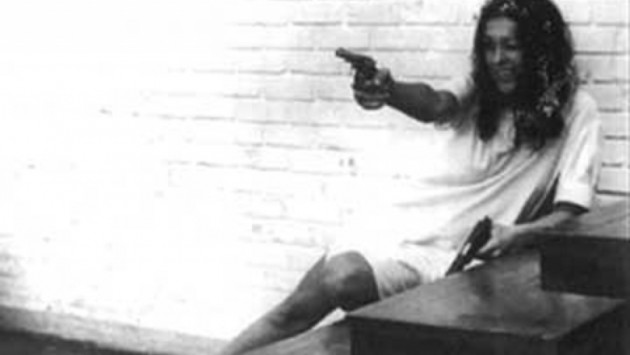
Killed The Family and Went to The Movies
The movement started in earnest in 1967 with Ozualdo Candelas’ The Margin, its birth following the 1964 military coup which plunged Brazil into a repressive dictatorial state. That coup led to various protests, the creation of an urban guerrilla movement, a “coup-within-the-coup” in 1968 (Johnson and Stam, 32) and a general climate of violence during the late 1960s and early 1970s which greatly influenced the pessimistic and polemic tone taken by Brazilian Marginal Cinema. The authoritarian regime’s reversing of social gains and opening to international (mostly American) capital, reinstating a first world hegemony were undoubtedly also factors in the movement’s general attitude (Johnson and Stam, 35).
All the films were thus created in a political climate which saw them as a nuisance and, sometimes, a threat. The directors had to perform a complicated dance around censorship as they were “harassed by the censors and boycotted by the exhibitors,” sometimes having their films banned (Stam, 313). This might in part explain their highly allegorical stance and occasional total rejection of conventional narratives. For example, Killed the Family and Went to The Movies uses non-contextualized episodes as a narrative structure, interrupting what little narrative flow might exist with no explanation. After the ostensible main character kills his family in the first ten minutes, he goes to watch a movie. In this way, he fulfills the title prophecy in the first twenty minutes, leaving the rest of the film with no narrative set of expectations. The unrelated episodes would seem to preclude any sort of continued political statement, but, as Xavier points out: “The film’s structure – its principle of juxtaposition and play on non-contextualization – suggests through its voids and silences the network of interdictions that condemn social agents to isolation” (214). By representing the impossibility of communication in its basic structure, Bressane seems to comment on the repressive censorship regime.
In the same vein, Killed The Family and Went to The Movies engages in a less oblique fashion with the repressive state. There is a scene of torture towards the middle of the film. Up to that point, violence had been used in most episodes as a closing element, an act of catharsis. Xavier argues that this “violence acquires here its uncommon connotation because the void created by the lack of explanation is fulfilled, as the film develops, by this formal order of repetitions that give a ritualistic dimension to the acts of transgression” (212). Violence also unites the segments as a repeated ritual. But the torture scene exists in a different register. As Xavier explains: “This is violence as method rather than as catharsis: the utmost expression of a diseased social tissue” (213). The torture scene is devoid, with its representation of violence as a punitive act from an overbearing state, of any allegorical substance. It cannot be understood as a liberating act or a cathartic gesture; it is merely violence. Bressane also makes explicit that scene’s relationship to the political situation of Brazil by giving the audience no information on the victim or the torturer, dropping the viewer in media res. As Xavier points out: “The fact that there is no attempt to identify the victim and no speculation on the circumstances reinforces the allusion to the period around 1970, at the height of the military dictatorship’s repression” (213). The basic meaninglessness of the scene, reinforced by the picaresque estranging structure of the film, can be read in itself as a comment on the absurd acts of the government and its tyrannical police.
The structural and repetitive violence of Bressane’s film can also be read as an indictment of the state. In the film, “the repressive society finds an oblique representation that thematizes its fractures through the eruption of microtragedies in closed spaces, informed by bourgeois ennui or lower-class privation” (Xavier, 214). The lack of information given by Bressane on each of the little scenes of violence he shows suggest a certain normalization, in all classes of society, of the state of affairs presented which is reinforced by his filming style. “The film’s pattern is that of a disciplined voyeurism . . . with the camera as stranger, newcomer to the sphere of action, attracted by the details of the environment in a detached posture of description that turns naturalism into allegory” (Xavier, 211). This lends everything in the film a lived-in quality, like flipping the pages of a newspaper and being confronted on every page with more senseless violence. But Bressane’s intentions are more complicated. Xavier explains:
Focusing on family crisis, the film stands back from the melodramas of resentment, the banal violence and the cynical view disseminated by the media. It seeks a different effect by performing a kind of observation oriented to creating estrangement exactly when it seems to be reproducing banal newspaper headlines (213).
This estrangement is meant to shake the public out of the torpor created by popular entertainment and mass media, and make the public understand the dangerous climate of violence which the repressive state used to keep its grip on the population under vague promises of “national security.”
Furthermore, The Red Light Bandit uses parody to engage with the repressive state. Xavier writes that “the characters in the fiction reveal themselves to be as stupid and inconsequential as Jorginho (the main character) himself” (115). These characters include the chief of police and the journalists who are presented as incompetent and idiotic.
This relationship with censorship is a cornerstone of aesthetics of resistance, but Brazilian Marginal Cinema functions in a different manner. The movement sets itself in opposition to almost everything. Its opposition to the government seems almost moderate when compared to its treatment of cinema novo, as its identification of the innate authoritarianism in any system treats repression as a given. Brazilian Marginal Cinema’s members felt cinema novo and its “aesthetic of hunger” had failed and had become what it had wanted to denounce in the first place, mockingly calling it “Cinema Novo Richo” (Rist) and labelling it “embourgeoisé, respectable, paternalistic, overly cautious both in its thematic and cinematic language” (Stam, 311).
A short introduction to cinema novo will help understand the aesthetics, environment and filmmaking practices Brazilian Marginal Cinema set itself against. Simply put, cinema novo was a Brazilian film movement which existed from the early 1960s to the early 1970s and united a group of like-minded directors, producers and critics. It “was conceived specifically to create a ‘Brazilian cinema’ in Brazil to reveal the country’s true face and to contribute to its transformation” (Shaw, 81). It therefore places itself in a more conventional aesthetic of resistance which sees cinema as “a tool for consciousness-raising, as an instrument for research and social analysis, and as a catalyst to political action and social transformation (Burton, 50-1). It also shares some traits with Italian neo-realism, such as the use of small budgets, non-professional actors and on-location shooting, but takes a more intellectual stance (Shaw, 81-2) and tries “to present a progressive and critical vision of Brazilian society” (Johnson and Stam, 32). It went through three major phases, mirroring the political changes rocking the country. The first phase, from 1960 to 1964, is characterized by an optimistic attitude, proletarian and rural settings and a belief in the transformative power of representation (Johnson and Stam, 33-4). The films of the second phase, after the first coup, “are anguished cries of perplexity; they are analyses of failure” (Johnson and Stam, 35). The third and final phase, Novo cinema novo, comes after 1968’s “coup-within-the-coup,” and displays higher production-values, like the use of colour, and a desire to appeal to a larger audience (Johnson and Stam, 37).
Arriving in 1967, Brazilian Marginal Cinema therefore set itself in a dialectic of resistance primarily with the third phase of cinema novo, its “selling-out” period. At a time when cinema novo was moving towards higher budgets and a slicker look, Brazilian Marginal Cinema celebrated its own independence with low-budget films, where the only expenses consisted of the film, the laboratory work and the camera, the movies clearly bearing “the marks of economic oppression, inscribing into the film themselves – by inaudible grating sounds and grainy images – the very precariousness of their own production” (Stam, 312).
At the same time, Brazilian Marginal Cinema was extremely critical of Brazil’s intellectual elite, with Sganzerla saying his movies committed the sin of being smarter than the critics, which the young director considered an extremely easy task (Sganzerla, 84). This also placed the movement in opposition to traditional aesthetics of resistance, which had been central to the first phase of cinema novo, embraced by the left and centered around cinema’s usefulness as an agent of social change. In contrast, Brazilian Marginal Cinema films shared a pessimism about the “possibilities for real change, leading some critics to condemn the Underground as ‘suicide-cinema’” (Stam, 315). They also adopted a highly ironic and anarchic tone, refusing to give answers to the problems they tackled. The Angel Was Born’s highly detached style is a strikinng example of the movement’s resistance towards conventional aesthetics of resistance, rejecting cinema novo’s calcified promises of change through representational empathy. As Xavier observes:
The adoption of the impassive style of detached observation and the use of the inexpressive camera are not intended to achieve an effect of objectivity . . . This lack of involvement is controversial; it expresses an explicit, historically grounded refusal of a style that cinema novo had turned into dogma (191).
The objections to Marginal Cinema films by some Brazilian critics is also representative of the relationship and dialogue between the two film movements, with cinema novo rejecting the Underground and the Brazilian Marginal Cinema subverting cinema novo’s ideas.
Shaw and Dennison argue that Brazilian Marginal Cinema is not a clean break with what came before, but a “radicalization of the original purpose of cinema novo” (89). However, what Brazilian Marginal Cinema’s filmmakers create is not a simple radicalization of cinema novo, but a perversion of its central tenets, using their usual devices of extreme irony and caricature to pervert cinema novo‘s broken message of social change. The Angel Was Born’s final scene parodies a fundamental visual metaphor identified with cinema novo, the open road representing the possibilities of the future. Bressane’s film elongates that shot to an excruciating eight minutes of nothingness, both emphasizing the deserted “future” and acknowledging the cliché the metaphor had become. The shot ends with a sudden zoom as a sort of final insult, another meaningless cinematic gesture.
That parodying of Cinema Novo aesthetics is central to the project of Brazilian Marginal Cinema, the creation of a new aesthetic for Brazilian cinema, and by extension third world cinema, an “aesthetics of garbage.” That “aesthetics of garbage” is, as all trash should be, in itself a perversion of a central part of cinema novo: its “aesthetics of hunger,” which was an attempt to create “a style appropriate to the real Brazil, to articulate a social thematic together with a production strategy into a truly revolutionary aesthetic” (Johnson and Stam, 68).
Reusing and recycling are central to an “aesthetics of garbage,” and parody is, in itself, an act of perversion and recycling. It takes a cultural object and “dirties” it, exposing its flaws for humorous and political effect. The previously discussed parodic finale of The Angel Was Born is a strong example of how Brazilian Marginal Cinema used the residue of cinema novo as a sort of open garbage bin to create its films.
Another facet of the “aesthetics of garbage” is its heavy use of cinematic quotations. Once again the image of a landfill populated by pieces of popular entertainment, old American movies and forgotten pieces of media, comes to mind. The Red Light Bandit is a good example of this. As Xavier writes: “Using a specific strategy of quotations, Sganzerla combines diverse references associated with opposed cultural contexts. After many references in exterior shots to pornographic film, there is another fragment of a cheap adventure film in a projection room” (107). Sganzerla’s film is like a scavenger picking through the history of entertainment. It doesn’t quote; it steals images and uses them for vastly different means than they were created for. It exists in the shadows of capitalism and neo-colonialism, the existence of an inhabitant of Boca de Lixo given cinematic form. The film seems to acknowledge the logical end of a purely capitalist film industry based around the churning of cheap expandable brainless entertainment in an underdeveloped context where citizens have to live in places with names like “The Mouth of Garbage,” a cinema made of cinematic trash. But, as Stam points out in his text on hybridity, “these aesthetics share the jujitsu trait of turning strategic weakness into tactical strength. By appropriating an existing discourse for their own ends, they deploy the force of the dominant against domination” (Stam). The recycling and perversion of popular entertainment becomes an act of resistance, appropriating an artifact from the dominant and twisting it to fit one’s own myth making.
The use of a form so indebted to garbage leads to a devaluation of the rest of the cinematic apparatus. It’s no surprise, then that those films treat conventional narrative, character development and everything associated with mainstream entertainment like detritus, since their whole approach is centered around a formal representation of trash. As Xavier succinctly explains: “In this context, the filmmaker refuses legitimacy to established representation, devalues social codes, and dissociates himself from the ‘illusions of the past embodied’ in Cinema Novo.” (120).
The Angel Was Born takes a similar approach, this time expanding the “aesthetics of garbage” to its episodic narrative structure. It also plays with narrative devices to separate its various elements and expose the gory insides of a normal film. But it’s most interesting game is how it frequently fixes itself on the unimportant, where its “disjunctive style is affirmed, separating narrative devices and diegesis – frequently, our look dwells on what “does not belong” in the story” (Xavier, 184), like a scene where instead of showing a killing the camera stays on a bare wall.
That disjunctive style serves more purpose than simply rejecting conventional narrative. As Xavier explains:
In The Angel is Born, the residual element (non-important) is individually foregrounded; it is not an element in a series of flashes. It retains its specific density as residue, as an inert element whose lengthy, monotonous presence withholds the expected flow of information. The residue is retained so that it can attest to non-identification, to the separation of narrator and diegesis, and in order to display a void or excess created by the “misplaced ellipsis” (186).
Each scene, especially those which seem like a throwaway and unimportant to the narrative, exists as an individual piece of filmic garbage put together almost randomly. The more it feels out of place, the more it asserts itself as a residue with a “density” all its own. The “aesthetics of garbage” is also about showing the stitches holding together a film. Something that mainstream cinema tries so hard to hide is here worn as a badge of honour.
The films’ representations of marginality are also extensions of the “aesthetics of garbage.” They are using the residues of society, the unwanted and the sullied, as central characters. The films have “an empathy for traditionally marginalized groups such as blacks, homosexuals, indigenous populations and women” (Shaw and Dennison, 89). For example, The Angel Was Born, which uses a highly unconventional episodic narrative structure and achieves a highly disjunctive style, would seem to exist in an apolitical narrative space. In it, “Society is exiled from the screen and is only presented by the bandit’s victims, who pay the price of being present on their route” (Xavier, 183). The spaces are bare, society almost non-existent. But this space is highly political, since it seeks to bring the viewer into the marginal space. Xavier notes that these “disjunctive strategies permeate the entire film and make clear that the condition of apartness contaminates The Angel Was Born on all levels” (188). Everything from its episodic structure and disjunctive style to its use of deserted places is meant to signal the marginality the characters are prisoners of.
The film’s use of marginality exists as a furthering of Brazilian Marginal Cinema’s “aesthetics of garbage.” As Xavier writes: “The bandits’ experience is enacted, not shared; they are irremediably isolated in a journey through transgression from which there is no return; it must be performed to an end (which the film deliberately ignores)” (191). The film cannot expect to give any answers since it is nothing but a piece of garbage. Brazilian Marginal Cinema acknowledges the essential powerlessness of third world cinema as it exists and in the form of cinema novo. A real third world cinema can never rise above the trash; it must be built from it of it or it becomes something else, something that can be appreciated by the oppressor, the way colonialists came to like cinema novo. The true act of resistance lies in being one’s true self, not in trying to achieve a success decided by the first world “other.” Brazilian Marginal Cinema’s most subversive act is trying to show the true face of marginality through its dealing with “drug abuse; promiscuity; lack of respect for traditional values . . . [and] a celebration of an alternative lifestyle” (Shaw and Dennison, 89).
The movement does not try to sugarcoat reality: “Bressane’s film presents its allegory as the site of non-reconciled, of characters cut off from material progress or any other promise of salvation, living an experience that reaffirms the endless work of death” (Xavier, 200). The true resistance of the “aesthetics of garbage” lies in its unwillingness to change, lie or imagine an impossible utopia. It must make a “bad” cinema, a true cinema untainted by the hegemony of an objectifying first world “other” and in this way represent its own reality.
That resistance through marginality finds expression in The Red Light Bandit, which stands as a perfect example of how the movement’s representation of marginality mirrors its own attitudes toward authority. The film makes explicit The Angel Was Born’s implicit celebration of marginality through its inventive use of parody and caricature. The film presents a sort of shadow society of criminals, prostitutes and “undesirables” with its own social structure. The members of that society wear their marginality proudly. As Xavier writes:
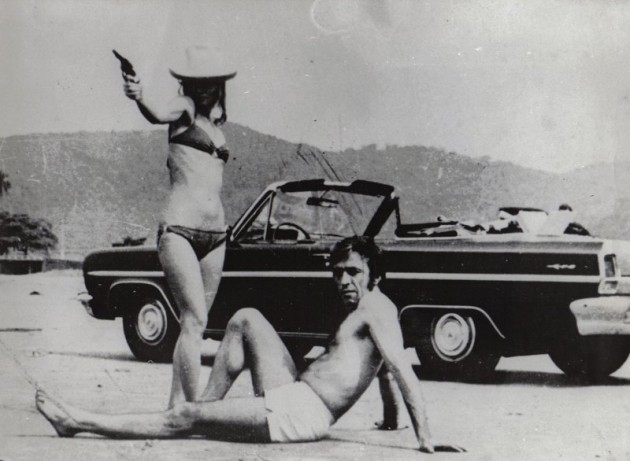
The Red Light Bandit
The essential point is to make the marginalized figure assume an exhibitionist attitude, parodying his or her subaltern condition, making a caricature of an identity built by the other. Defeat and impotence are assimilated by means of a self-demoralization that puzzles because it refuses to deal with failure on a moral register. The affirmation of garbage and ignorance becomes somehow an aristocratic affectation, a rejection of the rule, a parody addressed to people in power and simultaneously to the serious intellectual who intends to be society’s saving conscience (115).
That attitude is central to the “aesthetics of garbage.” The self-mockery, nihilism and tastelessness of Brazilian Marginal Cinema is its proudest achievement, its most subversive act. It’s “badness” doesn’t simply defy the systems of repression; it completely ignores them, refusing to be defined by them. The “aesthetics of garbage” creates a complete cinema which doesn’t solicit or need the approbation of an intellectual elite like cinema novo seemed to, or the economic return of mainstream cinema. Like the forgotten inhabitants of the slums, the black sheep of capitalism and neo-colonialism, it simply needs to exist. It achieves the difficult and radical task of existing only for itself in defiance of everything.
Brazilian Marginal Cinema created a true radical aesthetic, the “aesthetics of garbage” as an act of resistance against the repressive government, the paternalistic artistic and intellectual elite and the objectifying gaze of the first world, and found a way to represent Brazil’s and its own marginality. The movement and its aesthetics only existed for a short period of time; it could not survive for long. Like many of its characters, it was on a fatal path. But, for its short life, it managed to stand proud defying the whole world. It lived and it was impossible.
Brazilian cinema is the greatest precisely because it is impossible.
Rogerio Sganzerla
Featured image taken from The Angel Was Born
Bibliography
Burton, Julianne. “The Camera as “Gun”: Two Decades of Culture and Resistance in Latin America.” Latin American Perspectives 5.1 (1978): 49-76. JSTOR. Web. 15 Oct. 2013.
Dennison, Stephanie, Lisa Shaw. Popular Cinema in Brazil. Manchester: Manchester University Press, 2004. Print.
Ferguson, Russell et al. ed. Out There: Marginalization and Contemporary Cultures. New York: New Museum of Contemporary Art, 1990. Print.
Johnson, Randal, Robert Stam, ed. Brazilian Cinema. New York: Columbia University Press, 1995. Print.
Rist, Peter. “A Brief Introduction to Brazilian Cinema.” Offscreen 9.6 (2005). Web. 15 Oct. 2013.
Shaw, Lisa, Stephanie Dennison. Brazilian National Cinema. London: Routledge, 2007. Print.
Sganzerla, Rogério. “Everybody’s Woman.” Brazilian Cinema. Ed. Randal Johnson and Robert Stam. New York: Columbia University Press, 1995. 84-5. Print.
Stam, Robert. “Hybridity and the Aesthetics of Garbage: the Case of Brazilian Cinema.” Cultural Visual en América Latina 9.1 (1998). E.I.A.L. Web. 15 Oct. 2013.
Vieira, Joao Luiz, ed. Cinema Novo and Beyond. New York: Museum of Modern Art, 1998. Print.
Xavier, Ismail. Allegories of Underdevelopment Aesthetics and Politics in Modern Brazilian Cinema. Minneapolis: University of Minnesota Press, 1997. Print.



